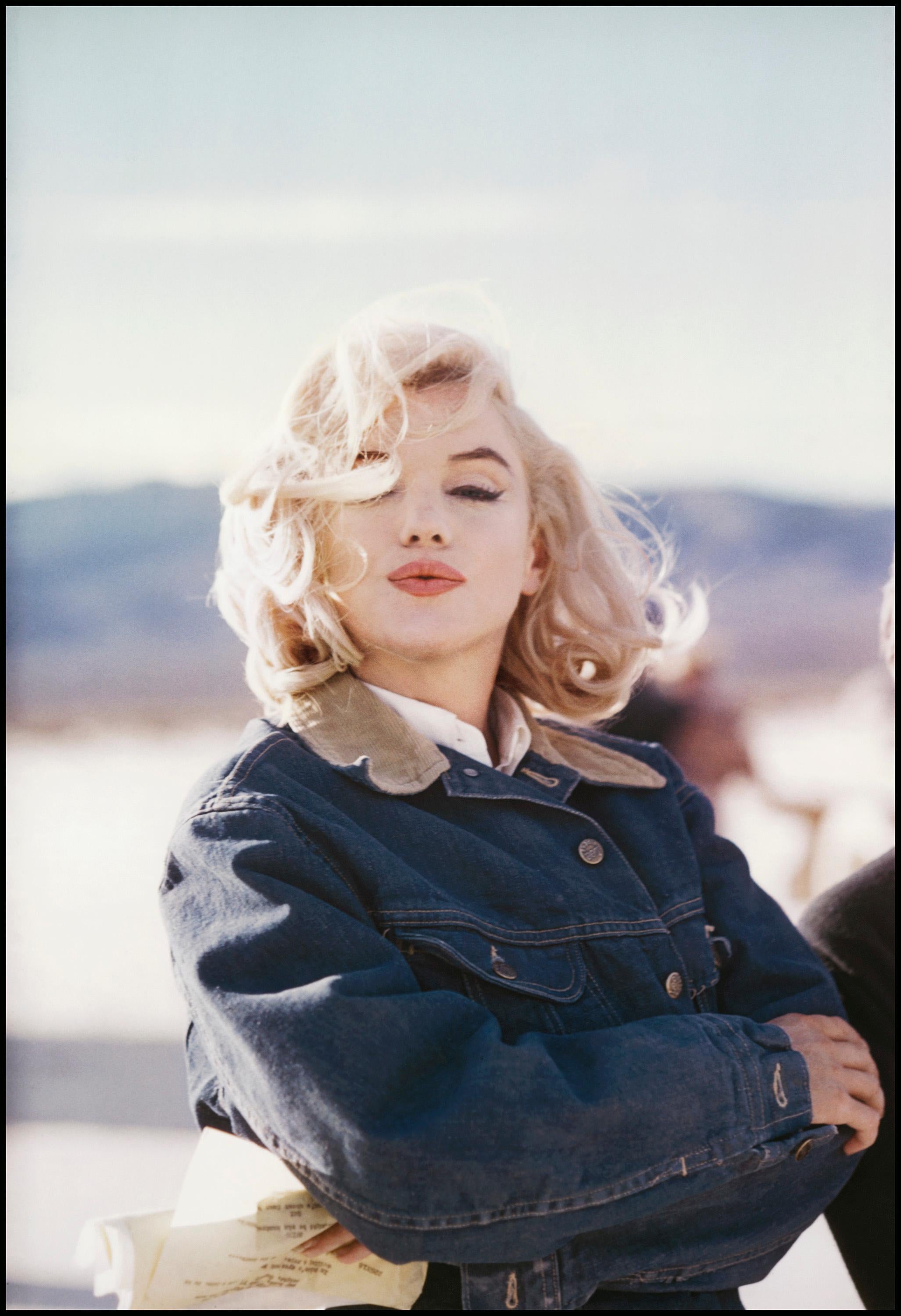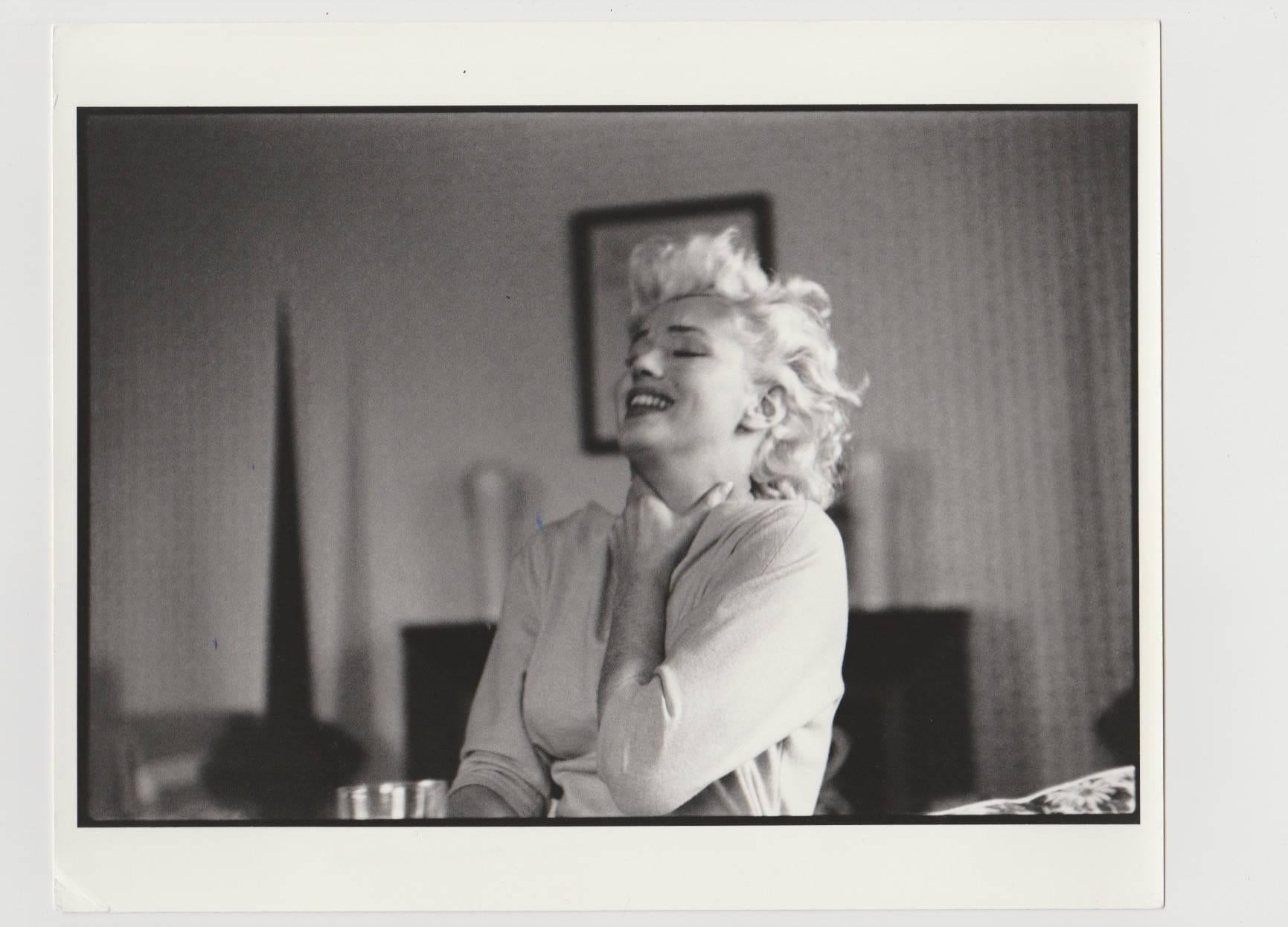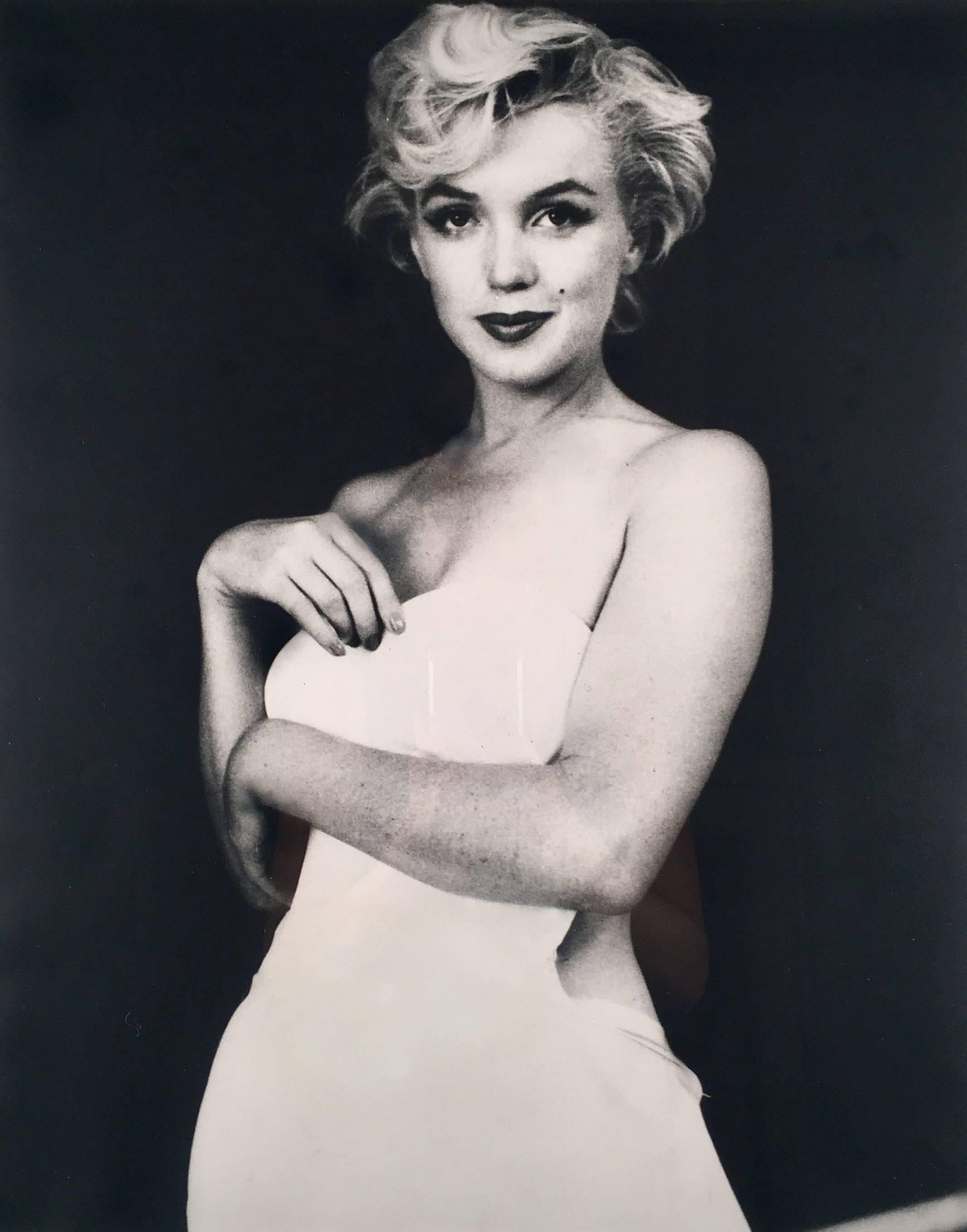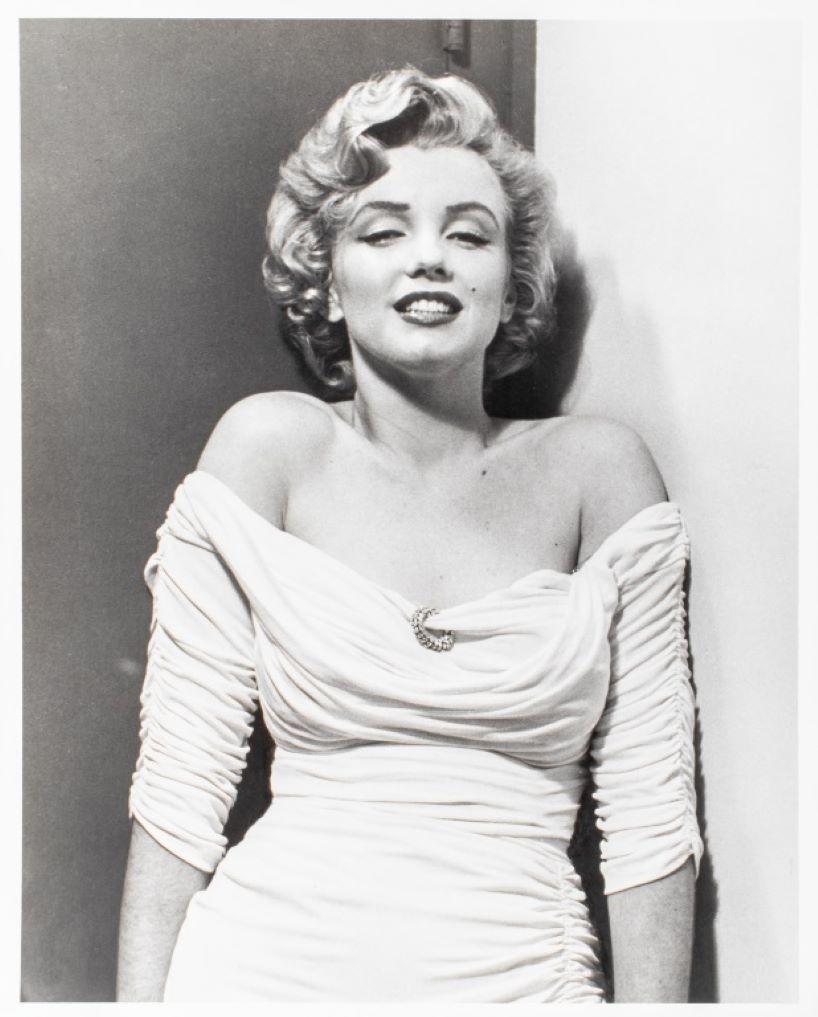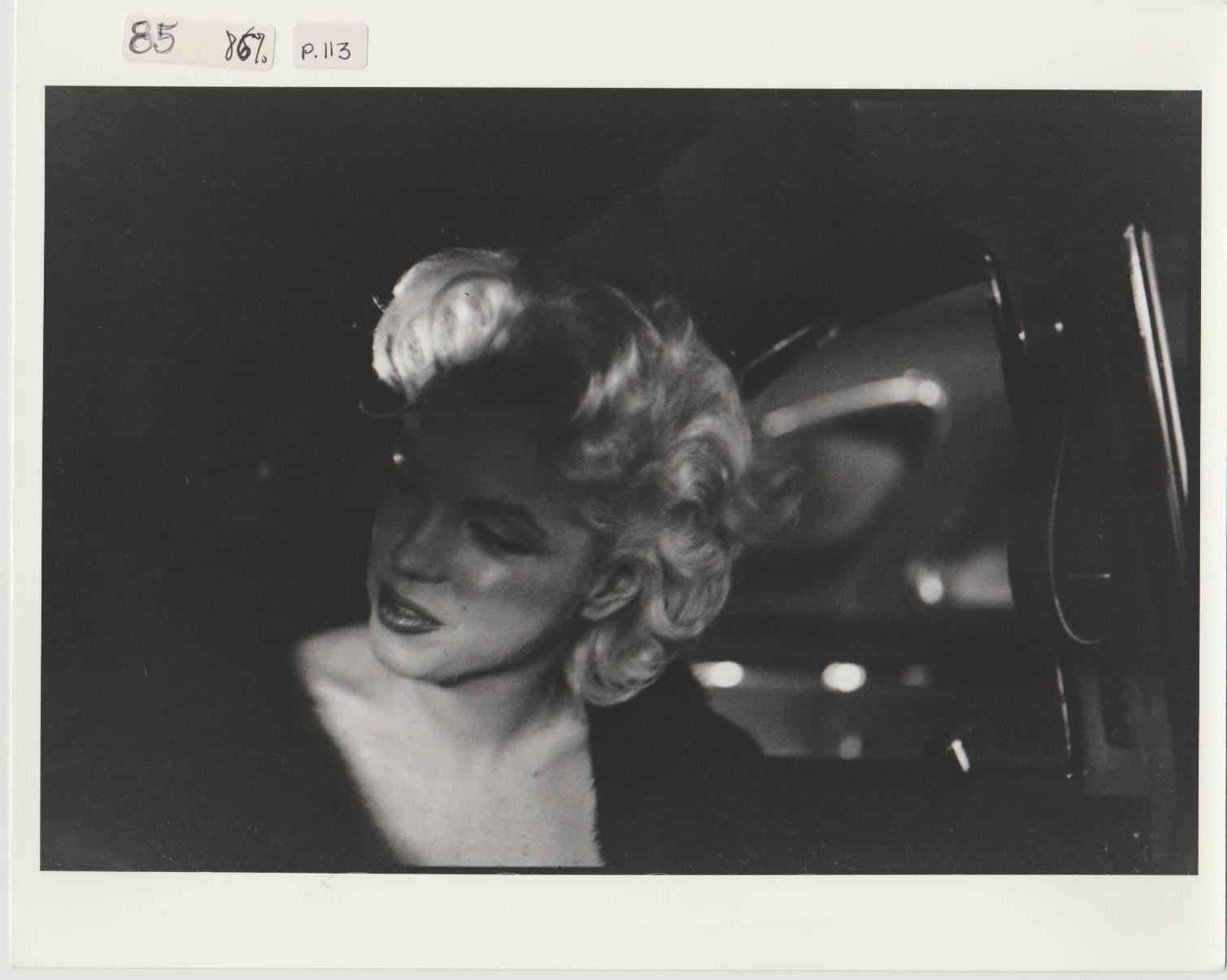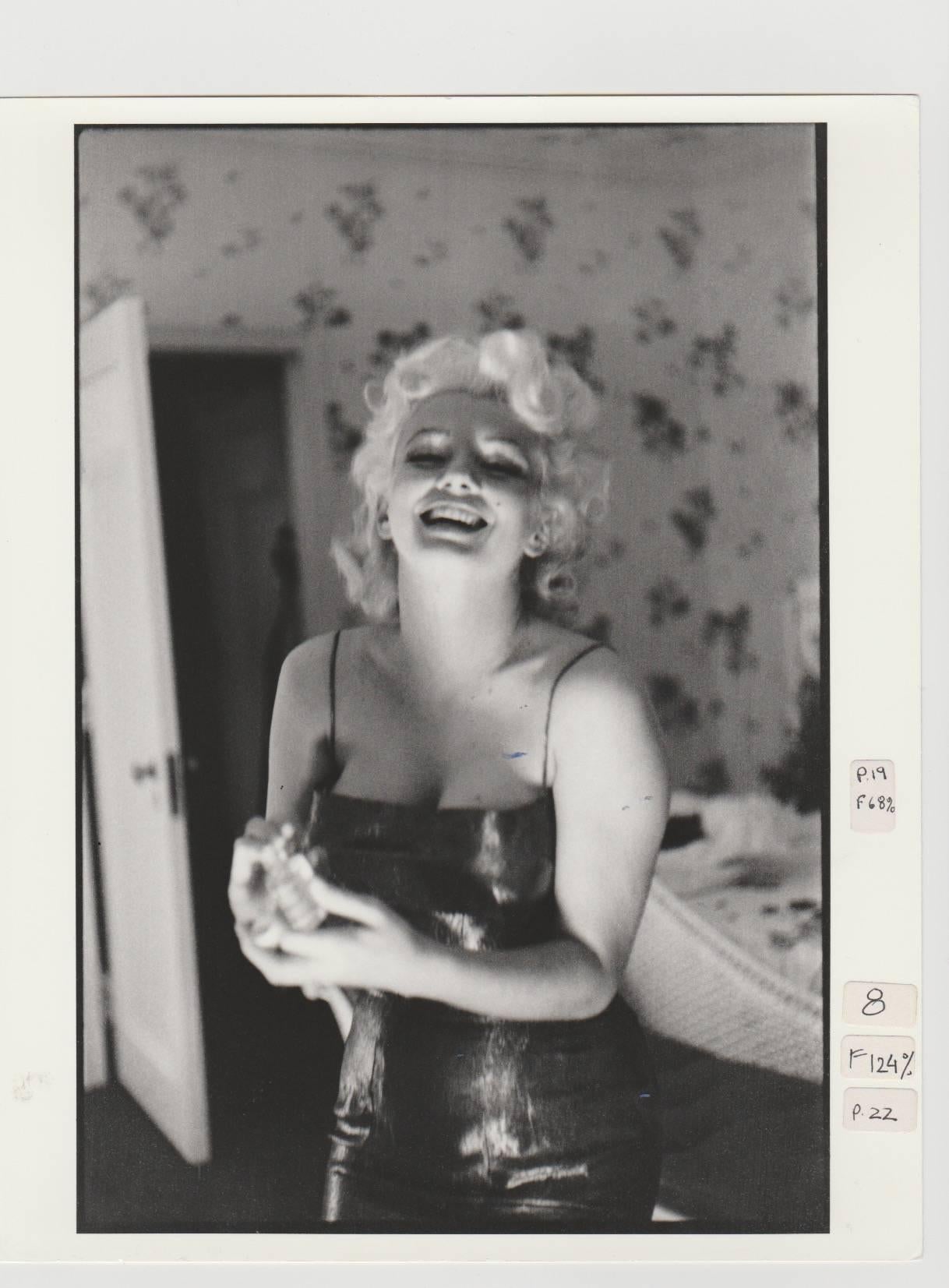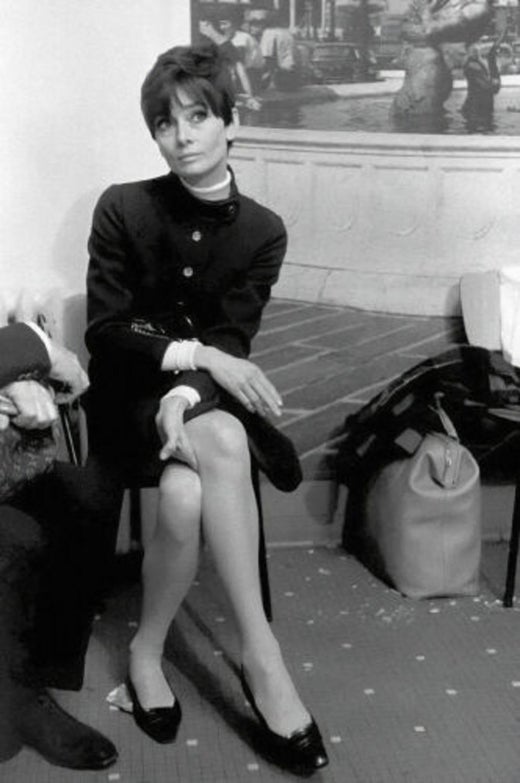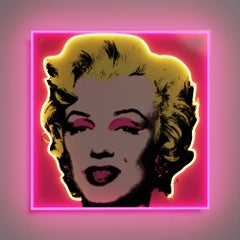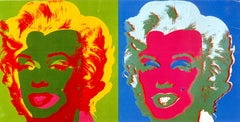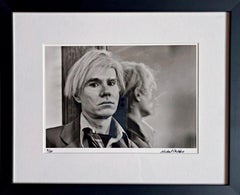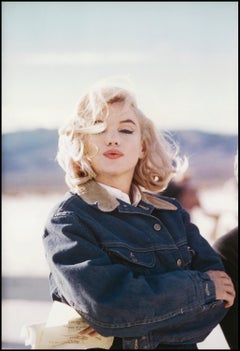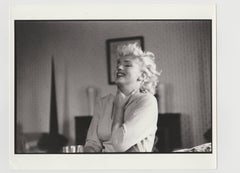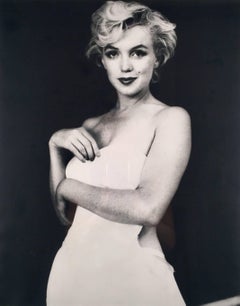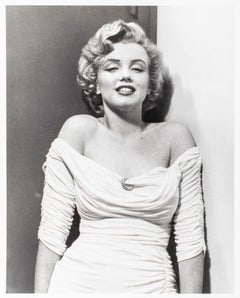This gorgeous offset lithograph poster was created on the occasion of the Eva Arnold exhibition, Marilyn Monroe: An Appreciation, at the famed Leo Castelli Gallery in 1987 - Castelli Uptown at the East 77th Street address. This poster was designed by David Smoak. Uncommon and highly collectible. This would look glamorous in any home or office. Original posters from the legendary Leo Castelli Gallery are coveted collectibles. (Castelli is considered one of the most influential dealers of all time, as he represented Roy Lichtenstein, Andy Warhol and Jasper Johns.)
Limited Edition of 300 (unnumbered; not signed)
Accompanied by Certificate of Guarantee issued by Alpha 137 Gallery
Unframed
Eve Arnold Biography
Eve Arnold was born on 21 April 1912 in Philadelphia, Pennsylvania, to Russian-Jewish immigrant parents; her father was a rabbi from Odessa. A friend's gift of a camera during her early medical training led her into photography and for several years she shot pictures for her own pleasure and developed them in a small darkroom. During the Second World War she married a graphic and industrial designer and worked in a photo-finishing factory, rising quickly to become plant manager. After the war she gave birth to her son and for a short period stayed at home.
Returning to photography, Arnold enrolled in 1948 at the New York School for Social Research, where her work impressed Alexey Brodovitch, then art director at the fashion magazine Harper's Bazaar. For her first course assignment on fashion, she chose Harlem, and as no American magazines at that time featured black fashion, her pictures stood out. Picture Post in London - a magazine that pioneered photojournalism - published the story. In 1951 Arnold took this piece and a picture essay on migrant labourers in Long Island to the Magnum photographic co-operative, and they invited her to join as a stringer; she became a full member in the mid 1950s. In 1962 Arnold moved to Britain so her son could be educated at Bedales School, and with the exception of six years spent working in China and the United States, she lived there for the rest of her life.
'The Sunday Times and Magnum have both acted as my base', said Arnold, 'from which I've been able to decide what exactly I want to do. That sort of security, and the freedom it gives, are a great privilege for any artist. Editorial reportage is wonderful, but it doesn't always pay the bills, so then Magnum might arrange for me to do some stills on a movie, or some industrial photography.'
Arnold's career ranged widely geographically, in subject matter and by medium. She considered herself primarily a photojournalist but also wrote books and produced a film on the harems of Arabia, Behind the Veil. At the start of her career, she was a pioneer of colour photography. 'Among my colleagues, a controversy arose about the merits of black and white versus colour', she related. 'The purists would say that colour is commerce and black and white is art - an argument that has not abated with the years. As for me, I am greedy and, not wanting to limit myself, will use whatever tool is at hand. So, depending upon the dictates of the mood and the moment, I will change from colour to black and white and back again, or will manage both simultaneously.'
Arnold shot hundreds of portraits during her career, often photographing people as they worked; many of these were published in her 1989 book All in a Day's Work. At once respecting privacy and intently observing, she found her subjects 'will offer you part of themselves that you can use, and that is the big secret.... I looked for a sense of reality with everything I did. I didn't work in a studio, I didn't light anything. I found a way of working which pleased me because I didn't have to frighten people with heavy equipment, it was that little black box and me and £5 worth of film in my pocket.'
Probably Arnold's best-known work is her photography of film star Marilyn Monroe, published in book form in 1987 and revised and reissued in 2005. Six sessions took place over a 10-year period, the shortest two hours and the longest two months, when Arnold saw her daily during filming of The Misfits. Trust and respect were established, and the result is a portfolio shot through with affection and concern, showing Monroe with her foibles and problems but also with humour, warmth and humanity. 'I never knew anyone who even came close to Marilyn in natural ability to use both photographer and still camera', said Arnold. 'She knew what to do. She would impose her psychic needs, her moods, her eroticism upon the session, working rapidly so that expression after fleeting expression wafted across her face, her body moving sinuously in cadence so the photographer could only try to keep up.... If I felt she was flagging and it was necessary, I would say what was wanted and she would swing into action. Mainly what was wanted was for her just to be herself.'
Arnold's work with film stars spanned over three decades and included such actors as Elizabeth Taylor, Marlene Dietrich, Jean Simmons and Simone Signoret; men were represented too, among them Clark Gable, Richard Burton, Orson Welles and Charlie Chaplin. Film Journal, published in 2002, brings together 25 of her photo-essays on these celebrities. World leaders Arnold photographed include Queen Elizabeth II - a charming shot of her sheltering under a black umbrella but looking skywards is in the National Portrait Gallery, London (1968) - and Margaret Thatcher, surrounded by huge stone statues of Winston Churchill (1977).
At the opposite extreme, Arnold worked for Life magazine in its heyday, travelling to Afghanistan, South Africa and the former Soviet Union in an era when images of these areas were few. In 1973 the absolute poverty in South Africa under apartheid was deeply painful to encounter: 'One series of pictures that I did was of children suffering from malnutrition, dying children in mothers' arms, and it was heartbreaking to see these kids dying of no food. I deliberately went out of my way to show how terrible it was.' In Russia, she photographed political dissidents who had been confined to an asylum for the insane.
In two massive projects, Arnold captured the collective lives of whole nations - China and America - and the individual circumstances of many ordinary people. 'From the very beginning of my becoming a photographer', she once wrote, 'high on the agenda was a plan to go to China'. After applying annually for a visa for 15 years, in 1979 she was finally successful. Preparing to document the reality of post-Cultural Revolution China, then a nation of 800 million, she methodically set up a scheme categorised into landscape, people, work and living. In two long trips she travelled with the official interpreter of the tourist bureau, covering over 60,000 kilometres, from Beijing to Mongolia, up the Tibetan plateau and across the Gobi desert. Her 12,000-transparency record of China on the brink of industrial reform shows a country of bewildering diversity, a world of peasants and city workers, athletes and students, government officials and Buddhist monks. Photographs were displayed at the Brooklyn Museum, New York, in 1980 - Arnold's first major solo exhibition. Her book In China was published the same year, winning the National Book Award in the United States, and she received the Lifetime Achievement Award from the American Society of Magazine Photographers.
Arnold received many other honours and awards. In 1995 she was made fellow of Britain's Royal Photographic Society and elected Master Photographer by the International Center of Photography, New York. The following year she received the Kraszna-Krausz Book Award for In Retrospect; in 1997 she was granted honorary degrees by three universities; in 2003 she received the distinction of an honorary OBE; and in 2010 the Sony World Photography Awards paid tribute to her leading role in the photographic community with a Lifetime Achievement Award.
Shortly after Arnold's death on 4 January 2012 at age 99, Halcyon Gallery mounted a tribute exhibition, displaying the full collection of limited edition Marilyn Monroe photographs. Her transparencies, negatives and contact sheets are now retained by the Beinecke Rare Book and Manuscript Library at Yale University, one of the largest buildings in the world devoted entirely to rare books and manuscripts.
